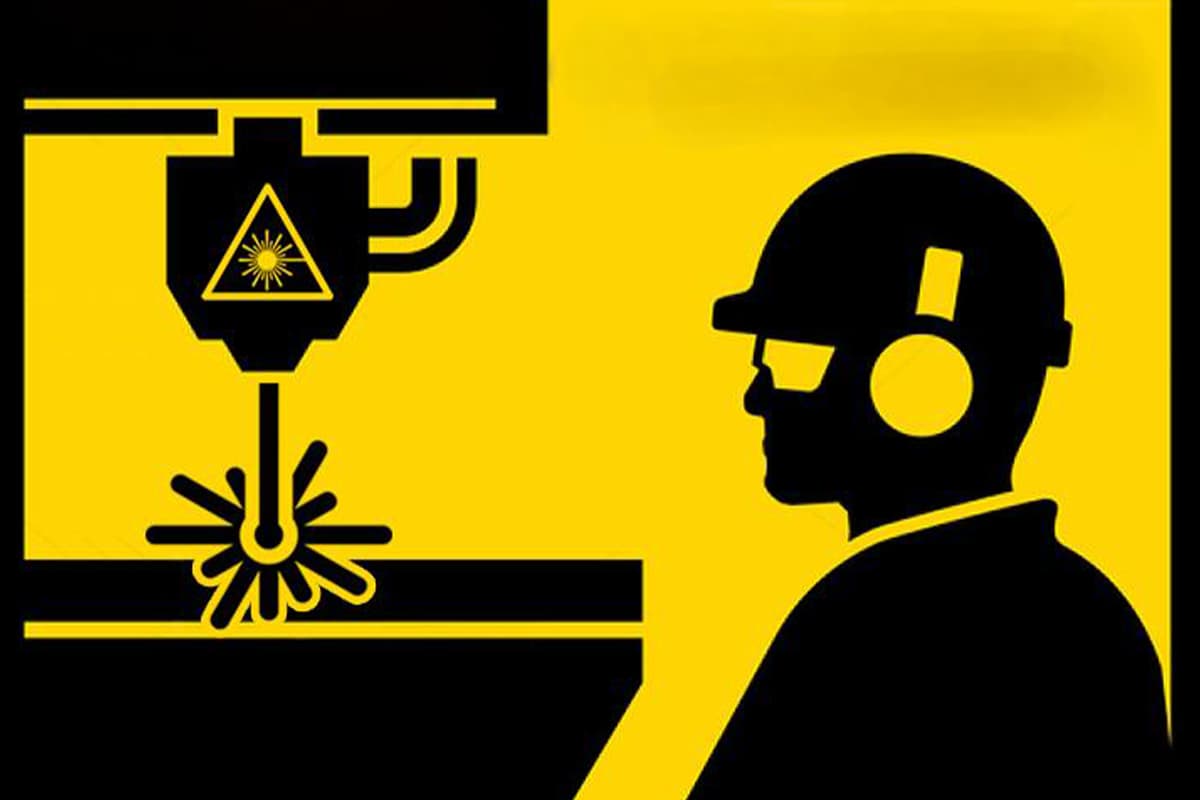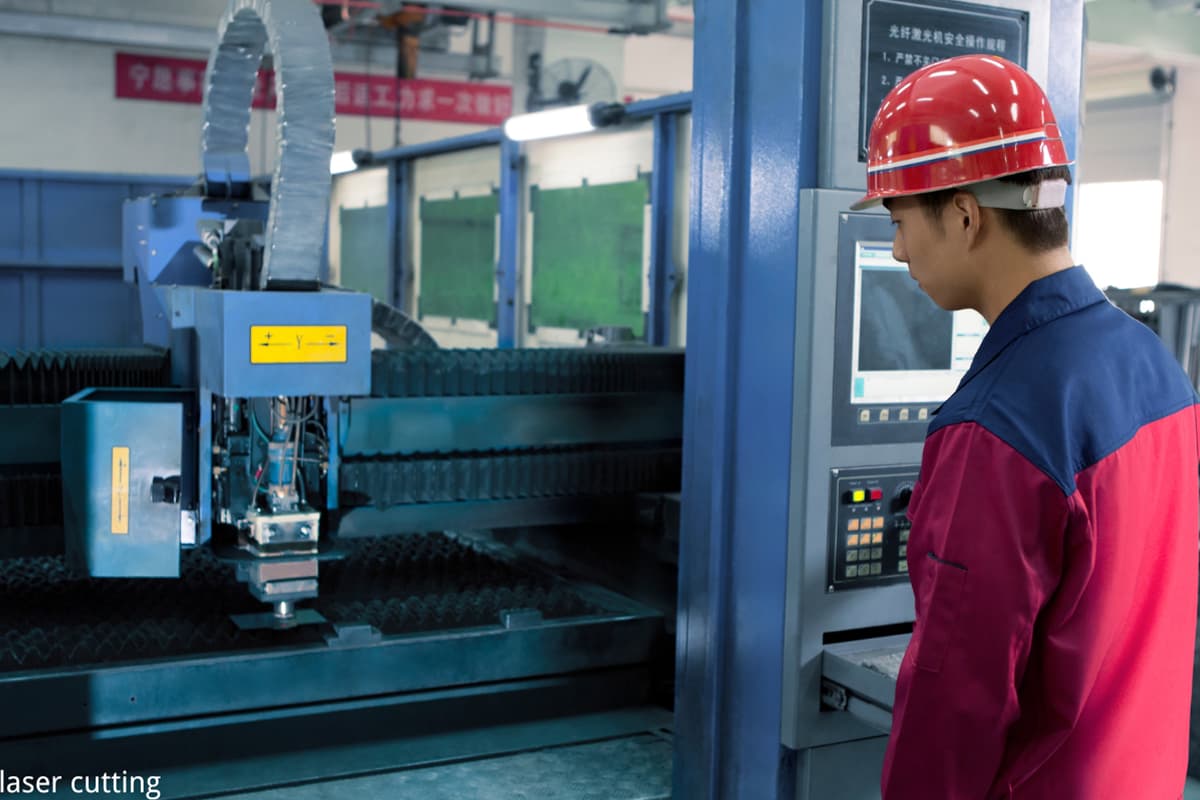A laser cutting machine is a device which utilizes a high-energy laser beam to cut and process the material. Its working principle is to generate a high-intensity laser beam via the laser. After being focused by the optical system, the laser beam will be irradiated onto the material surface, making the material melt, vaporize, or reach the ignition point. Meanwhile, the high-pressure gas will blow away the molten material. The laser cutting machine features high precision, high speed, narrow gap, small heated zone, high flexibility, etc. This makes it widely used in many spheres like metal fabrication, electronics manufacturing, the automotive industry, and aerospace. The laser cutting machine is mainly divided into three types, namely CO2, fiber, and YAG. The CO2 laser cutting machine is suitable for cutting non-metal materials such as wood, plastics, and acrylic. Fiber laser fits for metal cutting owing to its advantages of high efficiency and low maintenance cost. YAG laser cutting machine is suitable for marking and fine processing. Laser-cutting machine safety plays a significant role in metal fabrication due to its high energy level and potential risks. If treated improperly, it will lead to severe safety accidents and health hazards. Today, we will mainly talk about the common hazards and their corresponding measurements, emergency procedures as well as safety features of the laser cutting machine. Firstly, let’s recognize the safety devices on the machine. In order to avoid unnecessary accidents and risks, the modern laser cutting machine itself has made some endeavors. Here are the equipped safety devices in detail: The laser cutting machine is equipped with interlocking devices. These devices can stop the machine to protect the operator under specific conditions. There is an emergency stop button installed in the laser cutting machine. It is usually installed in the obvious place to facilitate pressing immediately when an emergency occurs. Once the button is pressed, the machine will stop. The laser and power supply will also stop. This function can prevent the incidents from exaggeration, ensuring the operators’ safety. The laser cutting machine adopts a protective cover and shield to prevent laser radiation. These protective devices can not only protect the operators from laser harm, but also can prevent splashing metal parts and smoking from hurting the human body. The modern laser cutting machine’s cover is usually made of transparent materials. This can help the operator observe the cutting process clearly while maintaining security. Some eye-catching safety warning labels are pasted on the laser cutting machine to remind the operator of potential dangerous zones, such as laser emission areas or high-temperature areas. The cooling system is not only used to common operation of the equipment but also is beneficial to prevent machine overheating or malfunctioning. This system can keep the temperature of the laser and other parts in a safe range. There is some smoke and harmful gases generated during the cutting process. Thus, the laser cutting machine is equipped with a smoke and dust extraction system. This system can effectively exhaust the smoke and dust generated during the cutting process, preventing environmental pollution while protecting the operators’ health. The laser cutting machine operator needs strict training and wears proper protective equipment, such as protective goggles, and gloves. The laser beam is highly intense to direct or reflect onto human skin or eyes, which may cause severe harm. The high temperature will generate during the laser cutting process. This may cause fire hazards, especially when cutting flammable materials. The laser cutting machine tool often uses a high voltage power supply, thus there is a risk of electric shock and electrical fire. There will be a large amount of smoke and fine particles generated during the cutting process. Long-term inhalation will damage the respiratory system. Laser radiation not only harms the eye and skin but also brings potential hazards to other organs. Some materials will produce harmful gases during the laser cutting process, such as chlorine gas, and fluorine gas. This will cause large damage to the human body's health. The laser cutting machine consists of many mechanical parts, such as a cutting head, and transmission device. If treated improperly, it may cause mechanical injury. It is of vital importance for us to know the safety standards during the use of laser cutting machines. This will not only protect the operators’ safety, but also ensure the equipment operation efficiency. Here are the main safety standards: OSHA is an Occupational Safety and Health Administration (OSHA) in America. It aims to protect the workers’ safety and health. As for laser cutting machines, the OSHA relevant standards include: 29 CFR 1910.97:this includes the standards for non-ionizing radiation, which covers the safety requirements for laser radiation. 29 CFR 1910.212: this includes general requirements for machines and machinery. ANSI formulates a series of criteria for laser safety, namely: ANSI Z136.1: the laser safety standards offer a safety using guideline for the laser cutting machine, which covers the classification of laser radiation, control measures and operational requirements. ANSI Z136.9:this is especially designed for laser uses in industrial and manufacturing environment, which offers detailed safety operation standards. IEC 60825-1 is a laser product safety standard, which is widely adopted by the international. This standard regulates the classification of laser equipment and label requirements as well as safety protective measurements. Keep calm: it is very important to keep calm when an emergency occurs. Staying lucid can help you judge the condition and take appropriate action. Access the condition: quickly access the properties and severity of the emergency. This includes the danger source, amount of people being affected, and the potential results. Warning: inform the emergency response team on the spot immediately or dial the emergency services hotline. Remember to offer clear and accurate data, namely types of emergency situation, positions and people being affected. Evacuation: evacuate to a safe area quickly according to the scheduled evacuation route. Make sure that people who need help like injury or inconvenient to move get the help. Emergency solutions: take proper emergent measures according to the types of emergency situations. For example, use the fire extinguisher to put out the fire, and close the gas valve to prevent the leaking and spreading. Waiting for professional help: ensure all the staff are in the safety zone, and wait for further instructions before the professional emergency response team arrives. First aid training: all the workers should accept basic first aid training, including CPR, bleeding control, burn treatment, and fracture management. Training and drills regularly to ensure that all the staff master the necessary first aid skills. First aid equipment: make sure that the working area is equipped with adequate first aid equipment, such as a first aid kit, and AED. This equipment should be placed in a position that is easy to access, and needs to be scheduled checked, and maintained. Emergency response team: establish a specialized emergency response team, which is responsible for coordinating and exerting the emergent measurements immediately. The team members should accept professional training, and be familiar with the various emergent programs and the use of equipment. Emergency communications: establish a reliable emergency communications system to quickly transmit information in an emergency. This can include internal broadcast systems, emergency phone lines, intercoms, etc. Emergency drills: conduct emergency drills regularly to simulate various emergency situations and test and improve emergency response plans. Drills should include all employees, and the results of the drills should be recorded and analyzed to identify and resolve potential problems. In this article, we explored the safety features of laser cutting machines, common hazards and their preventive measures, emergency procedures as well as relevant safety standards. The safety features of laser cutting machines include automated protection systems, emergency stop buttons, and fume extraction devices, all of which provide additional safety for operators. However, despite these safety measures, operating laser-cutting machines still poses common hazards such as laser radiation, fire risks, and mechanical injuries. Therefore, understanding and adhering to strict safety standards and operational procedures is crucial to ensure workplace safety and productivity. Enhance your operations with high-quality laser cutting machines from ADH Machine Tool. With 20 years of experience in manufacturing laser-cutting machines, we are committed to providing the most advanced and reliable equipment. Visit our laser cutting machine products page to learn more and discover how we can help you boost efficiency and safety in your workplace. A trekking pole is an assistive device used for outdoor sports such as hiking below the snow line. trekking poles for hunting,trekking poles for hiking,carbon fiber trekking poles,collapsible hiking poles,walking sticks for hiking Ningbo Autrends International Trade Co., Ltd. , https://www.zjouterlead.comI. Introduction
Brief overview of laser cutting technology
Importance of laser cutting machine safety
II. Safety Features of Laser Cutting Machines
Interlocking device
Emergency stop button
Protective cover and shield
Safety warning label
Cooling system
Smoke and dust extraction system
Operator training and protective equipment
III. Common Hazards and Protective Measures in Laser Cutting Machine
Eye and skin injuries

Protective measures:
High temperature and fire hazards
Protective measures:
Electrical hazards
Protective measures:
Inhalation of fumes and particles
Protective measures:
Laser radiation protection
Protective measures:
Harmful gas protection

Protective measures:
Mechanical injury protection
Protective measures:
IV. Compliance with Safety Standards
OSHA
ANSI
IEC
V. Emergency Procedures
Steps to take in case of an emergency

First aid and emergency response plans
VI. Conclusion
According to research, the use of trekking poles during walking provides a number of benefits
during exercise, such as
Reducing pressure on the knee joint by 22%, providing adequate protection to the knee.
Improves walking stability, maintains balance and prevents sports injuries.
Increasing the range and frequency of body movements and enhancing walking speed.
evenly exercising muscles throughout the body and protecting the lower back and spine.
Reduces physical exertion by 30%.
Can be used as a support for rain or sun shelters.
Can be used for self-defence when encountering wild animals, etc.
Suitable scenarios
1. Outdoor hiking and trekking
Choose a three- or four-section trekking pole with a straight handle and aluminium or carbon fibre poles.
2. Flat/field walking
You can choose professional walking poles with sloping handles.
The walking poles have different wrist straps from ordinary hiking poles, with full palm straps that can
be used to match the swing angle of the arm.
The three-section carbon fibre poles are easy to carry and are more popular.
3. Recreational hiking/everyday use
Two-, three- and four-section poles are available, depending on the need for portability. You can choose
from aluminium, carbon fibre or wooden poles.
We mainly offer trekking poles for outdoor use, for example in the forest or on small hills. You can rely on
our quality and we are always available for services for your inquiries.